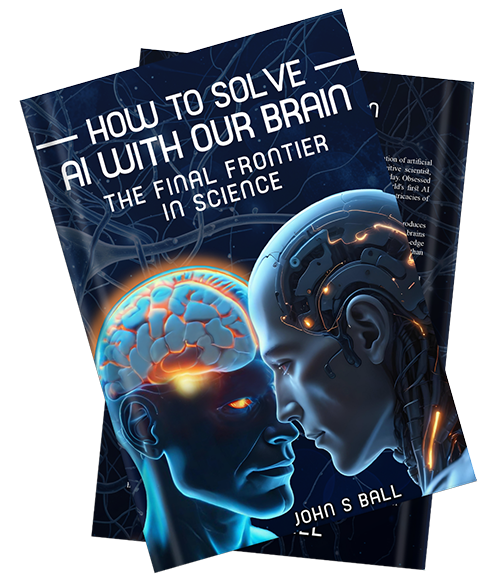In the race to create the next generation of Artificial Intelligence (AI), researchers are finding inspiration not from the algorithms of the past, but from the intricate workings of the human brain. For decades, AI development has been driven by statistical models and computational methods. Most recently AI models rely heavily on data, using tools like machine learning. While these models have achieved impressive results in specific areas like speech recognition and image processing, they fall short of human-levels in those critical areas. They also fall short when it comes to understanding and replicating the complexity of human language and other capabilities. The key to unlocking the future of AI lies in how the brain understands the world around us. Unlocking AI promises to interact with us as another human would!
The human brain is a marvel. It doesn’t process information; it understands, infers, and adapts–learning from new experiences. The core of this understanding is meaning. When we hear a sentence, our brain doesn’t merely recognize the individual words—it recognizes the meanings behind them. This capability allows us to grasp the context, make inferences, and understand nuances that go beyond literal interpretations. To achieve true AI, machines must replicate this ability to comprehend meaning, not merely compute patterns from vast datasets.
This is where a shift from traditional AI approaches to cognitive science-inspired models becomes crucial. Current AI models, such as Large Language Models (LLMs), excel at predicting the next word in a sentence or generating human-like text. However, they lack human-like comprehension. They can repeat patterns they’ve learned from data, but they can’t truly “understand” the meaning behind the words. In contrast, the human brain relies on a deep, semantic understanding of language, interpreting words based on context, experience, and their meaning.
John Ball, the creator of the Patom Theory, isolated this distinction. His work is grounded in the belief that AI should emulate the brain’s method of recognizing meaning in context rather than relying on statistical models. His approach, outlined in his book How to Solve AI with Our Brain, focuses on building AI systems that use semantic representations of language—systems that can understand the relationships between words and phrases in the same way that the human brain does. As meaning is independent of any language, the system centralizes each language around the same meaning. This shift toward meaning-based AI holds the potential to unlock a new era of machine intelligence where machines accurately emulate humans.
One of the most compelling aspects of using brain-inspired models for AI is the possibility of creating systems that can interact with humans more naturally. Imagine a machine that doesn’t just respond to commands but understands the context, infers intent, and adapts its responses accordingly. This would revolutionize everything from personal assistants to enterprise software, as AI would be able to engage in meaningful conversations, offer more relevant solutions, and understand complex human needs.
The future of AI is not about increasing data or building larger models. It’s closer to the opposite, using tiny models of language as human children do link to vast language-independent knowledge repositories. AI’s future is about learning from the most advanced system we know—the human brain. By focusing on how the brain accurately recognizes meaning, we can create AI systems that understand the world more like humans do. John Ball’s work on brain-based AI models is leading this shift, offering a promising path to the next generation of systems that can truly understand language, leading to breakthroughs in AI we have wished to achieve for decades but now can hardly imagine.


